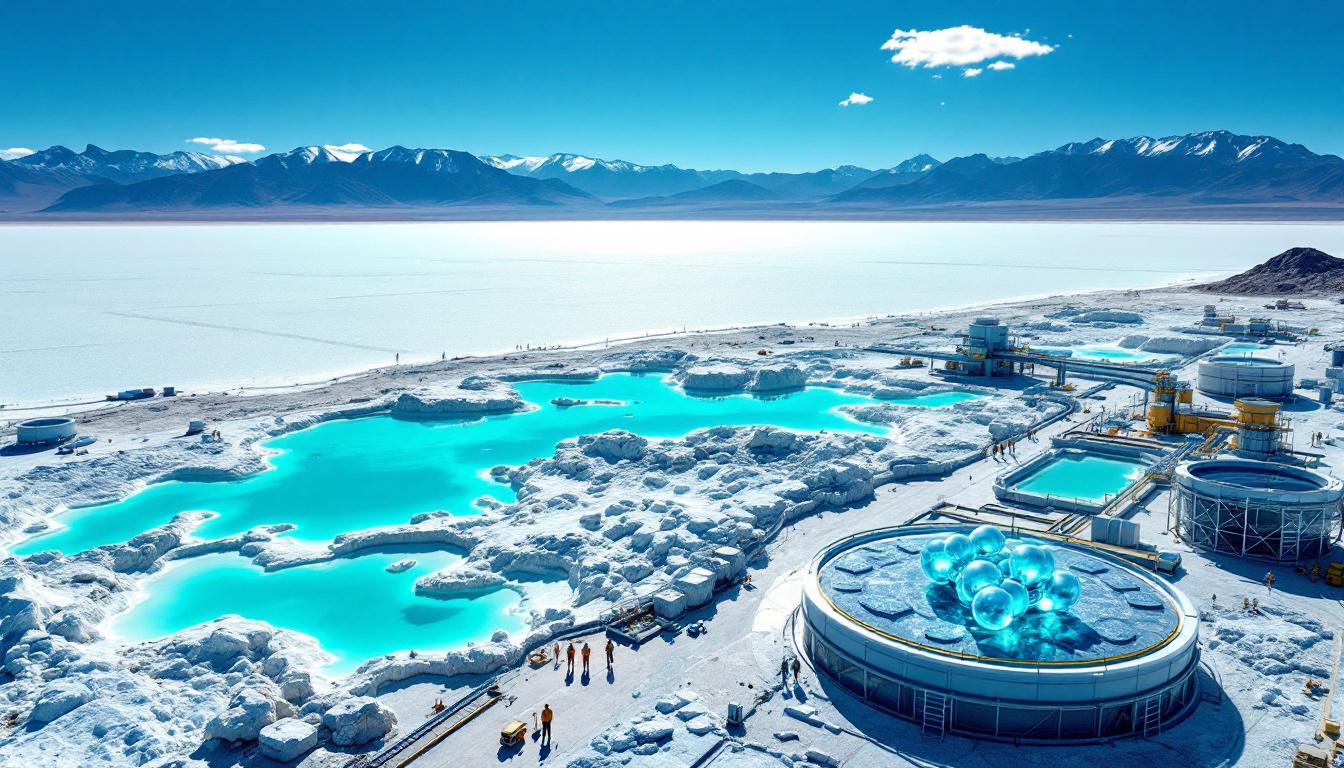First Quantum's Cobre Panama mine arbitration has sparked intense debate among industry experts, investors, and environmental groups. The dispute over the copper operation in Panama has become emblematic of tensions between corporate interests and national sovereignty. The issue is compounded by escalating resource nationalism and market uncertainties.
What is the Cobre Panama Mine Dispute About?
The dispute centres on one of Central America's largest copper mining operations. The site, a $10 billion project, once contributed around 1% of global copper production.
First Quantum Minerals, the Canadian giant, has found itself in a legal and environmental battle that reverberates globally. This conflict is further highlighted by the cobre panama dispute.
Panama’s government ordered the shutdown following unprecedented environmental protests. The Supreme Court declared the mining contract unconstitutional in November 2023.
This dramatic decision ended operations and escalated tensions between environmental activists, the government, and the company.
The mine, located in Panama’s Colón Province, had been in operation since 2019.
It covers roughly 13,600 hectares and sits in an ecologically sensitive area known for its rich biodiversity. The case has become a reference point in debates over environmental policies and economic investments.
Before its closure, the operation produced approximately 350,000 tonnes of copper concentrate each year.
Such output made the mine a cornerstone for First Quantum’s global operations and a critical node in the copper supply chain.
How Much Financial Impact Has the Mine Closure Had?
The financial fallout has been severe for both First Quantum Minerals and Panama's economy.
Industry analysts estimate losses of about $8 million per day since the shutdown, totalling roughly $240 million monthly in lost revenue.
Approximately 120,000 metric tons of copper concentrate remain stranded at the site.
This stockpile is believed to be worth about $1.2 billion at current market prices. The immobilisation of such significant value has added to the financial strain.
After recent government moves allowing the export of the stranded concentrate, First Quantum’s stock experienced a surge of 15%.
This change in investor sentiment is well documented by a Reuters report.
The mine closure impacted Panama’s public finances as well.
Monthly tax revenues and royalties, totalling around $50 million, have been severely affected by the prolonged shutdown. Over 7,000 direct jobs and an estimated 40,000 indirect jobs are also under threat.
GDP forecasts for Panama have been downgraded by approximately 1.5 percentage points.
This adjustment underscores the outsized role of the mine in the national economic landscape.
What Are the Latest Developments in the Arbitration Process?
Recent progress in negotiations has provided some hope for a resolution.
Panama's President José Raúl Mulino has authorised the export of the stranded copper concentrate. This move marks a significant shift in the government's stance.
The government has also given permission to restart the mine’s power plant.
This technical measure is vital for maintenance and may pave the way for limited operational recovery. Such developments are echoed in mining arbitration update reports.
Reacting to these signals, First Quantum has begun re-evaluating its legal strategy.
The company is working to suspend its international arbitration case filed against Panama. In a statement, Manuel Aizpurua, the mine manager, noted the importance of restarting essential services for environmental safety and operational reliability.
Additionally, Panama’s commerce ministry has declared that further negotiations will require First Quantum to drop its arbitration claim.
This condition is a firm stance aimed at protecting national interests. The situation remains a delicate balance between legal resolution and diplomatic negotiation.
Why Did Panama's Government Order the Mine Shutdown?
The shutdown was prompted by multiple factors, including environmental concerns and public pressure.
Intense environmental protests in 2023 accelerated government action. Concerns ranged from threats to local watersheds to deforestation and habitat destruction, which resonated deeply with local communities.
Proximity to the Mesoamerican Biological Corridor heightened worries.
This wildlife passage is crucial for biodiversity, connecting ecosystems across the Americas. The president's reassurances have focused on environmental safety measures despite operational challenges.
The Constitutional Court found the mining contract unconstitutional due to procedural irregularities.
Its ruling stressed that resource exploitation must yield maximum social benefit, environmental safety, and adequate financial compensation. Dr Marina Gallego, an environmental law specialist, explained that the contract failed to meet these essential standards.
The legal decision provided the basis for the shutdown.
It was the culmination of months of protest and political pressure that had already tarnished the project's viability.
What Are the Potential Pathways to Resolution?
President Mulino has expressed his willingness to review the mine’s future responsibly.
His administration promises to balance economic needs with environmental protection, aiming for a pragmatic solution.
Formal negotiations appear imminent, with talks expected to begin shortly.
A key element of any settlement will be a reimbursement mechanism for Panama. This may involve higher royalty rates or a one-time special payment for exported minerals.
Several compromise scenarios are under discussion. Here are some of the potential pathways:
- A new mining contract with increased royalty rates of around 12-15%.
- A joint venture that gives the Panamanian government an equity stake in the operation.
- A time-limited arrangement with mandatory phase-out clauses.
- A reduced operational footprint coupled with enhanced environmental safeguards.
Mining law expert Carlos Mendoza predicts a hybrid solution.
He suggests that the resolution will include increased environmental protections, higher contributions to Panama’s treasury, and tighter government oversight. This balanced approach may finally settle the longstanding dispute.
How Does This Case Impact International Mining Investments?
The Cobre Panama mine dispute has substantial global implications.
It highlights the risks of resource nationalism for investors operating in emerging markets. Many companies are now reassessing the stability of their investment environments.
The case serves as a wake-up call as governments assert greater control over natural resources.
Instances in Latin America, such as disputes in Guatemala and Ecuador, further illustrate these trends. Analysts observe that such moves could reshape global mining strategies.
Investors now demand stricter assurances regarding contract security.
Many companies are revising their risk assessments, with contingency costs built in to hedge against regulatory uncertainties. This shift is closely linked to discussions on resource nationalism.
The dispute has also increased scrutiny of arbitration mechanisms in protecting foreign investments.
Legal frameworks such as the Bilateral Investment Treaty between Panama and Canada are now under intense examination. This phenomenon is prompting a broader conversation about the future of international mining law.
What Are the Environmental Considerations at Stake?
Environmental concerns are at the heart of the Cobre Panama dispute.
The mine’s location in a tropical forest means that its disruption has significant ecological implications. Conservationists argue that even a dormant mine can pose risks to the environment.
The operational footprint disturbed nearly 5,900 hectares of forest.
This area is home to endangered species such as the pygmy three-toed sloth and unique amphibians. The environmental challenge is exacerbated by difficult maintenance of tailings storage areas.
Dr Rafael Córdoba, an environmental engineer, has emphasised the risks.
He warned that, without active management, water contamination risks escalate during Panama's heavy rainy season, when rainfall exceeds 3,000mm annually.
Enhanced environmental safeguards are now being prioritised.
Future operational renewals must include broader buffer zones, improved water treatment, and possibly designated conservation lands. Such measures are increasingly expected in modern mining practices.
What Does This Mean for Global Copper Markets?
The operational significance of the mine means its status has ripple effects on global copper markets.
Accounting for roughly 1% of global production, any change in its operations significantly influences supply dynamics.
Since the shutdown, global copper prices have shown increased volatility.
Prices have risen by approximately 8% in the months following the closure, reflecting tightened supply conditions. This sensitivity is particularly striking given rising demand forecasts.
Forecasts suggest that global copper demand will surge by 50-70% by 2035.
Factors driving this rise include the clean energy transition, electric vehicles, and infrastructure upgrades. Analysts warn that temporary operational changes, such as the copper rally factors, could influence short-term pricing trends.
The situation underscores the intrinsic link between politics, environmental concerns, and market performance in the copper industry.
Moreover, it emphasises the need for robust and adaptive investment strategies during periods of regulatory uncertainty. Companies are increasingly seeking mining investment tips as they navigate these challenges.
First Quantum's Cobre Panama mine arbitration remains a focal point for investors and policymakers alike.
Its outcome will likely set precedents for future disputes in the mining sector, informing how governments and corporations negotiate the complex interplay of environmental safeguards, economic returns, and legal protections.
Want to Stay Ahead of Major Mining Discoveries and Market Moves?
Discovery Alert's proprietary Discovery IQ model provides real-time notifications when significant mineral discoveries are announced on the ASX, giving you a critical edge in the market before news spreads. Explore historic returns of major discoveries at https://discoveryalert.com.au/news/discoveries/ and position yourself to capitalize on the next big mining opportunity.




